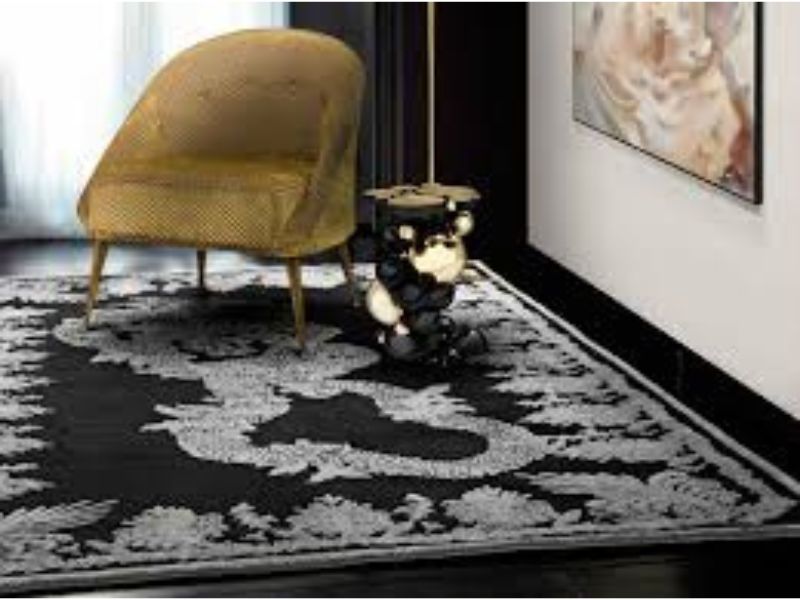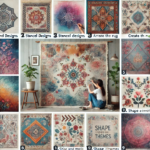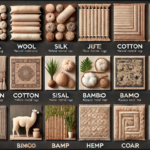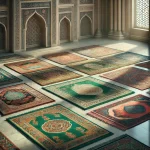Rugs have been an essential element of interior design for centuries, transcending cultures and eras to become a symbol of comfort, warmth, and beauty in homes around the world. A well-chosen rug can transform any space, adding color, texture, and personality while also providing practical benefits such as insulation and noise reduction. Whether you’re looking to make a bold statement or create a subtle backdrop, beautiful rugs offer a versatile solution for enhancing the aesthetics and functionality of your home.
The Timeless Appeal of Rugs
Rugs have a unique ability to tie a room together, anchoring furniture and defining spaces within open-plan layouts. They can serve as the centerpiece of a room, drawing the eye and setting the tone for the entire space, or they can subtly complement other design elements, providing a cohesive and harmonious backdrop.
Aesthetic Versatility:
- Color and Pattern: Rugs come in an endless variety of colors and patterns, from bold, geometric designs to intricate, hand-knotted Persian motifs. This diversity allows you to find a rug that perfectly matches your aesthetic preferences and enhances the overall design scheme of your room.
- Texture and Material: The texture of a rug can significantly impact the feel of a space. Whether you opt for a plush, high-pile rug for a cozy living room or a flat-weave rug for a sleek, modern look, the material and texture will add depth and dimension to your design.
Cultural Significance:
- Rugs often carry rich cultural histories, with designs and techniques passed down through generations. Persian, Turkish, and Moroccan rugs, for example, are renowned for their intricate patterns and craftsmanship. Incorporating such a rug into your home not only adds beauty but also a piece of history and tradition.
Choosing the Perfect Rug for Your Space
Selecting the right rug for your home involves considering various factors, including size, material, and style. Here are some key considerations to help you find the perfect rug for your space:
Size Matters:
- Room Size and Layout: The size of the rug should be proportionate to the room and the furniture layout. In a living room, for example, a large rug that extends under all the furniture creates a unified look, while a smaller rug can be used to highlight a specific area, such as a seating arrangement.
- Functionality: Consider the function of the room when choosing a rug size. In high-traffic areas like entryways and hallways, smaller, more durable rugs are ideal. In contrast, larger, more luxurious rugs can be used in living rooms and bedrooms to add comfort and warmth.
Material Selection:
- Natural Fibers: Rugs made from natural fibers like wool, cotton, and silk are highly durable and offer a luxurious feel. Wool rugs, in particular, are known for their softness, resilience, and natural stain resistance, making them a popular choice for living rooms and bedrooms.
- Synthetic Fibers: Rugs made from synthetic materials like nylon, polyester, and polypropylene are often more affordable and easier to clean. These rugs are a great option for high-traffic areas or homes with children and pets, as they are resistant to stains and wear.
Style and Design:
- Traditional vs. Modern: The style of the rug should complement the overall design aesthetic of your home. Traditional rugs, with their ornate patterns and rich colors, are ideal for classic or vintage-inspired interiors. Modern rugs, with minimalist designs and bold, abstract patterns, work well in contemporary spaces.
- Color Coordination: The color of the rug should harmonize with the existing color palette of the room. Neutral tones can create a calming, cohesive look, while vibrant colors can add energy and make a bold statement.
Caring for Your Rug: Maintenance Tips
A beautiful rug is an investment, and proper care is essential to maintain its appearance and longevity. Here are some tips for keeping your rug looking its best:
Regular Cleaning:
- Vacuuming: Regular vacuuming is crucial to remove dirt and debris that can accumulate in the fibers of the rug. Be sure to use the appropriate vacuum setting for the rug’s pile height and material to avoid damaging the fibers.
- Spot Cleaning: For spills and stains, it’s important to act quickly. Blot the area with a clean, dry cloth to absorb as much liquid as possible, then use a mild detergent and water to gently clean the stain. Avoid rubbing, as this can push the stain deeper into the fibers.
Professional Cleaning:
- Deep Cleaning: Depending on the material and usage, rugs should be professionally cleaned every 12 to 18 months to remove deep-seated dirt and allergens. Professional cleaning also helps preserve the rug’s colors and texture, ensuring it remains vibrant and soft for years to come.
- Rotation: To ensure even wear, rotate your rug every few months, especially in high-traffic areas. This simple step can extend the life of your rug and prevent uneven fading.
Protecting Your Rug:
- Rug Pads: Using a rug pad underneath your rug provides cushioning, prevents slipping, and protects the rug’s underside from wear. Rug pads also help with air circulation, preventing moisture buildup that can lead to mold or mildew.
- Sunlight Protection: Direct sunlight can cause fading over time, particularly in rugs with bright or dark colors. To protect your rug, consider placing it in an area with filtered sunlight or use window treatments to block harsh rays.
Incorporating Rugs into Your Home Décor
Rugs are incredibly versatile and can be used in various ways to enhance the décor of your home. Here are some creative ideas for incorporating rugs into your living space:
Layering Rugs:
- Layering multiple rugs in different sizes, colors, and textures can add visual interest and depth to a room. For example, you might layer a small, patterned rug over a larger, neutral one to create a focal point in your living room or bedroom.
Defining Spaces:
- In open-plan layouts, rugs can be used to define different areas, such as separating the dining area from the living room. This not only adds structure to the space but also creates a more intimate and cozy atmosphere.
Statement Pieces:
- A bold, colorful rug can serve as the centerpiece of a room, drawing attention and anchoring the décor. In a neutral room, a statement rug with vibrant colors or an eye-catching pattern can inject personality and become a conversation starter.
Outdoor Rugs:
- Don’t limit your rug choices to indoor spaces. Outdoor rugs are designed to withstand the elements and can add style and comfort to patios, decks, and outdoor living areas. These rugs come in a variety of patterns and materials, making it easy to extend your interior design aesthetic to your outdoor spaces.
Conclusion: The Lasting Impact of a Beautiful Rug
A beautiful rug is more than just a floor covering—it’s a work of art that can elevate the design of any room. Whether you’re drawn to the timeless elegance of a hand-knotted Persian rug or the sleek simplicity of a modern design, the right rug can transform your space, adding warmth, texture, and character.
By carefully selecting a rug that suits your style, needs, and the unique characteristics of your home, you can create a welcoming and aesthetically pleasing environment that reflects your personality and taste. With proper care and maintenance, your rug will continue to enhance your home’s beauty and comfort for many years to come.






